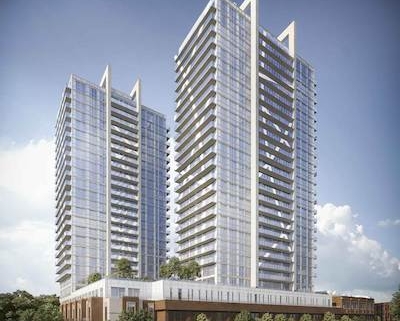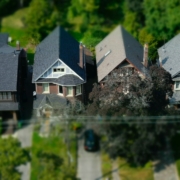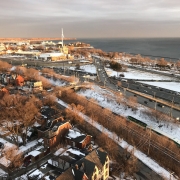Sam Kolias, chairman and chief executive officer of Boardwalk REIT, said Brampton is an ideal centre for a purpose-built rental project.
“We strive to create value in all parts of the cycle in multi-family communities,” Kolias told RENX, noting the GTA is in an “under-supplied, supply-constrained part of the cycle.
“New supply is really needed in that market more than it is in any other market that we’ve looked at.
“We believe that’s a great opportunity for us to create value, first and foremost, to residents that need housing and to create more supply of housing to help the marketplace match the demand that’s there – that everybody’s seeing. The data is really reflecting that more supply needs to be built and provided for the in-migration and population growth that is happening in the GTA.”
Kolias said the region has experienced several years of high population and job growth, which has created a shortage of housing supply. So, it’s a perfect time to construct purpose-built rental units.
Two towers, three-storey podium
The development plan for the Brampton Redwood project at 45 Railroad St. includes two towers — 25- and 27-storey concrete high-rise buildings above a three-storey podium (parking and retail) and three levels of underground parking.
There will be 365 units in the 380,000-square-foot development with the average suite size of 890 square feet. Retail space will be about 10,700 square feet.
Boardwalk said contracts for shoring, excavation, concrete supply, formwork, rebar and elevators have been signed. Shoring and excavation work began in mid-January and is progressing well.
The phased development is estimated to be completed between 2022 and 2024. Boardwalk will act on behalf of the partnership as the operating partner once construction is complete.
Total construction cost of the Brampton development is estimated at up to $215 million.
Boardwalk, RioCan JV in Calgary
Kolias said the addition of newly constructed rental communities in a new target market is consistent with the REIT’s long-term strategy of diversifying its portfolio. Boardwalk’s primary focus remains the recapture of revenue from its core portfolio, but Kolias added this new development provides “a measured, high-quality entry” into the Greater Toronto Area.
“We’re always open and looking for opportunities. . . . Looking at ways to create value,” he said.
Boardwalk REIT is also in partnership with RioCan REIT (REI-UN-T) to build a stepped six-, 10- and 12- storey concrete high-rise in Calgary at the Brentwood Village shopping centre. The 130,000-square-foot residential project will be home to 162 units with 10,000 square feet of retail.
Total estimated cost is $75 million to $80 million. Occupancy is expected to be in the first quarter of 2020.
“We don’t have anything (else) on the go right now in Western Canada because there’s more than enough supply to meet the needs of the marketplace in Western Canada,” said Kolias.
Boardwalk 2018 financial results
Recently, Boardwalk released its financial results for its fourth quarter and year-end 2018. Highlights included:
* total revenue increased year-over-year in Q4 by 3.8 per cent to $110.4 million; for the year, it rose by 2.8 per cent to $434.6 million;
* profit in the quarter was up 150.3 per cent from a net loss of $67.8 million last year to a profit of $34.1 million in Q4 2018; for the year, profit climbed by 237.4 per cent to $193.2 million;
* NOI was up 2.6 per cent in the fourth quarter to $56.1 million and by 4.6 per cent for the year to $226 million;
* funds from operations rose by 2.3 per cent in the quarter to $27.4 million and by 4.8 per cent for the year to $112.1 million;
* average occupancy in 2018 was 95.77 per cent compared with 94.38 per cent in 2017;
* and average monthly rent rose from $1,048 in 2017 to $1,094 in 2018.
At the end of the year, Boardwalk’s portfolio consisted of a total of 32,968 units in; Edmonton (12,906), Calgary (5,657), Red Deer (939), Grande Prairie (645), Fort McMurray (352), Quebec (6,000), Saskatchewan (3,884) and Ontario (2,585).
Kolias said the rental market in Alberta is nearing a level of balance. More stringent mortgage rules and continued positive international and inter-provincial migration into the province has increased demand for affordable housing, while the delivery of new housing supply remains below total demand.
Affordability key to rental market
He said the biggest factor that precedes a rental market trend is affordability. Right now, the market has the highest affordability it’s had in many, many years — probably decades.
“That’s the No. 1 variable that most accurately correlates the future of rental growth and the direction of a rental market,” said Kolias. “More people can afford it. When rent is way below the average household income, then the affordability is very high, so the propensity and the ability to pay more rent is there.
“Because our rents are one of, if not the most affordable in the country, we believe our greatest opportunity is in Western Canada right now — in our own backyard. Going forward we have learned that geographic diversification is essential.”
Kolias restated Boardwalk’s long-term strategic goal to have a portfolio about 50 per cent in Alberta and Saskatchewan and 50 per cent in other high growth and under-supplied markets.
“Going forward over the next 10, 15 years we want to . . . be more geographically diversified. At least 50/50 East/West. We’ve got a ways to go because we’re about 30/70 East/West now,” he added.
In the financial results, Boardwalk noted the December sales of two of its Regina portfolios:
* Kenley Apartments for $15.9 million. The 140-unit portfolio was comprised of eight buildings, ranging from eight units to 32 units;
* and the 641-unit Boardwalk Estates portfolio for $71.7 million.









 Maziar Moini, Broker of Record - Home Leader Realty Inc.
300 Richmond St. W., #300, Toronto, ON M5V-1X2
Maziar Moini, Broker of Record - Home Leader Realty Inc.
300 Richmond St. W., #300, Toronto, ON M5V-1X2


